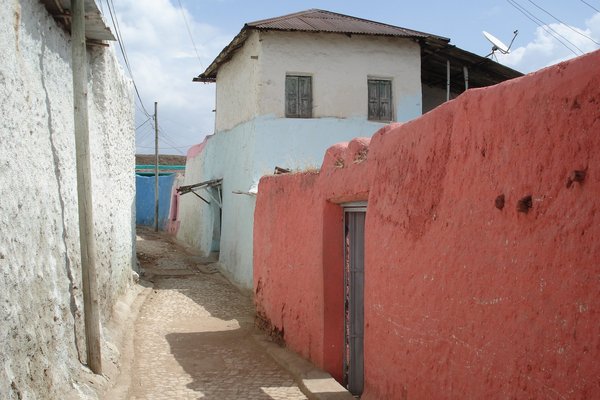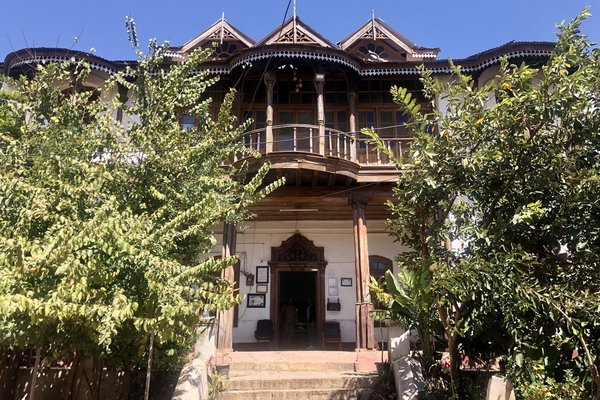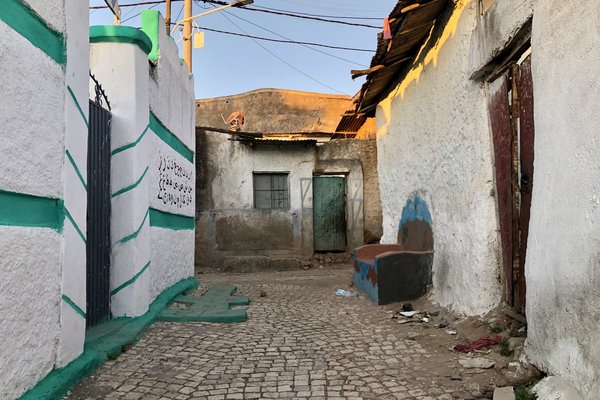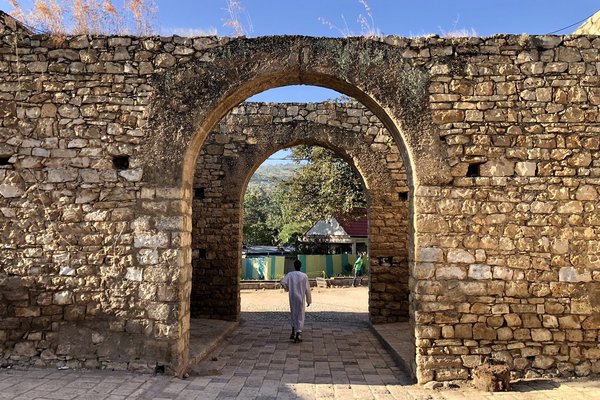Ethiopia
Harar Jugol
Harar Jugol, the Fortified Historic Town, represents a major trade center that linked African and Islamic trade routes.
The urban plan of this traditional Islamic town is characterized by a maze of narrow alleyways and townhouses with imposing facades. It is considered "the fourth holiest city of Islam", with 82 mosques and 102 shrines. As the only Islamic city within a Christian region, it has distinct cultural traditions that continue until this day.
Community Perspective: Solivagant describes the city's history and recommends a visit to a traditional Harari house. Wojciech managed to stay overnight in one and also tried some black kite feeding at the butchers' section of the market. And, although touristy, both enjoyed the nightly hyena feeding.
Site Info
Official Information
- Full Name
- Harar Jugol, the Fortified Historic Town (ID: 1189)
- Country
- Ethiopia
- Status
-
Inscribed 2006
Site history
History of Harar Jugol
- 2006: Inscribed
- Inscribed
- Type
- Cultural
- Criteria
- ii
- iii
- iv
- v
Links
- UNESCO
- whc.unesco.org
- Official
-
- visitethiopia.travel — Visit Ethiopia Harar
- Related
-
- en.wikipedia.org — Wiki on Harar
All Links
UNESCO.org
- whc.unesco.org — whc.unesco.org/
Official Website
- visitethiopia.travel — Visit Ethiopia Harar
Related Resources
- en.wikipedia.org — Wiki on Harar
News Article
- Sept. 23, 2007 mercurynews.com — Ancient Ethiopian city seeks tourists.
Community Information
- Community Category
- Urban landscape: African
Travel Information
Recent Connections
-
Untranslated Toponyms
"The four-meter-high limestone wall, or… -
Built in the 16th century
"Some sources indicate that Harar came … -
UNESCO Intangible Cultural Heritage Lists
Shuwalid festivalSee ich.unesco.org
Connections of Harar Jugol
- Individual People
-
-
Sir Richard Francis Burton
-
General Gordon
Working for the Egyptian Khedive who had annexed the Emirate as part of his intended "African Empire" he visited Harar in 1878 and dismissed the governor. Wrote to Richard Burton "I wish you could undertake the Government of Zeyla, Hara, and Berberah, and free me of the bother. Why cannot you get two years' leave from F.O., then write (saying it is my suggestion) to H.H., and offer it? I could give, say, ?5,000 a year from London to your Government." -
Sir Wilfred Thesiger
Visited in Dec 1930 during his visit to Haile Selassie's coronation (there by personal invitation). Wrote in Danakil diary that "except for a few corrugated iron roofs, it still looked the same as when [Burton] had been there"
-
- Trivia
-
-
Minority communities
Ethiopian muslims -
On beer cans and bottles
Harar*See www.ratebeer.com
-
- History
-
-
Forbidden City
"Harar was a fiercely religious city and was a forbidden city (closed to visitors), until 1887" -
African Kingdoms
Emirate of Harar (1647 - 1887)See en.wikipedia.org
-
- Architecture
-
-
Octagons
Church of Medhanie Alem -
Vernacular architecture
traditional townhouses
-
- World Heritage Process
-
-
Perfect Inscriptions
2006 -
First sites filling gaps cited by ICOMOS
Islam 2006
-
- Religion and Belief
-
-
Islamic pilgrimage sites
"the fourth holiest city of Islam" -
Notable mosques
82 mosques, three of which date from the 10th century -
Cathedrals
Medhane Alem Cathedral
-
- Human Activity
-
-
Coffee
Ethiopian Harar is a coffee bean of the species arabica that is grown in the region of Harar in the Eastern highlands of Ethiopia. It is one of the oldest coffee beans still produced and is known for its distinctive fruity, wine flavour. Nom file: the principal income of the area of Harar remained coffee
-
- Constructions
- WHS on Other Lists
-
-
UNESCO Intangible Cultural Heritage Lists
Shuwalid festivalSee ich.unesco.org
-
- Timeline
-
-
Built in the 16th century
"Some sources indicate that Harar came into being around the 10th century or even earlier. Islam was introduced to Ethiopia in the 9th century. Three mosques of Harar have been dated to the 10th century...The walls surrounding this sacred Muslim city were built between the 13th and 16th centuries...In the 16th century, Harar was established in its present urban form and from 1520 to 1568 it was the capital of the Harari Kingdom. From the second half of the 16th century until the 19th century, Harar was noted as a centre of trade and Islamic learning in the Horn of Africa" (AB)
-
- WHS Names
-
-
Untranslated Toponyms
"The four-meter-high limestone wall, or Jugol, encircling the old city was constructed from 1551 to keep invaders at bay". Jugol is a Harari word which means "wall" or "enclosure" and has come to mean the entire city within the walls.
-
News
- mercurynews.com 09/23/2007
- Ancient Ethiopian city seeks touri…
Recent Visitors
Visitors of Harar Jugol
- Adrian Turtschi
- Alexander Barabanov
- Ammon Watkins
- Artur Anuszewski
- Atila Ege
- Bamse
- Bill Maurmann
- David Marton
- del
- Dolemite92
- Emili Xaus
- Fernweh
- Fmaiolo@yahoo.com
- Gernot
- Harry Mitsidis
- Janos
- Jarek Pokrzywnicki
- Jasam
- John Smaranda
- Kevin247
- Knut
- Lindaflat
- Loic Pedras
- Luis Filipe Gaspar
- marcel staron
- maryhattie
- Michael Novins
- Morodhi
- Nihal Ege
- Philipp Leu
- Pieter Dijkshoorn
- Reza
- Roger Ourset
- Roman Bruehwiler
- Solivagant
- Stanislaw Warwas
- Szucs Tamas
- Thomas Buechler
- Thomas van der Walt
- Tim Allen
- tony0001
- Westwards
- Wojciech Fedoruk
Community Reviews
Show full reviews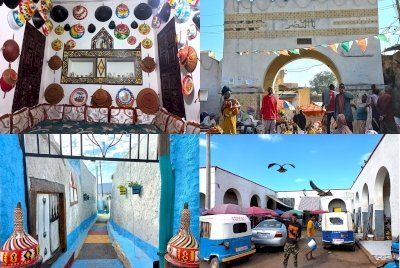
It's been 17 years since Solivagant visited Harar and wrote about it in a review that was so comprehensive that no one added a new one after that. Bowing to the previous reviewer, I will try not to repeat myself and add a few new elements, current as of January 2024.
Not much seems to have changed in these 17 years. We were surprised by the fact that Harar is a very lively urban center, both inside and outside the old city. We were lucky enough to sleep in a traditional Harari house and the scenery was indeed fantastic (see photo #1).
In the evening we went to feed the hyenas and, although the show is aimed at tourists, it is not to be missed. The master of the ceremony first puts the stick in your hand and then tells you to put it in your mouth - this places the hyena's muzzle several centimeters from our face. At least a dozen hyenas come to be fed, and they often roam the city streets at night, clearing them of waste and not harming people sleeping on the streets.
The next morning we went on a proper tour of the old town. The city is very old, the guide claimed that it was the second oldest in Ethiopia after Aksum, and until the 19th century it was an independent state. You can see Arab, Afar, Oromia, Italian, British, French, Portuguese and even Indian influences here. During their only …
Keep reading 0 comments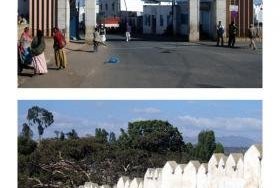
In the 19th Century Harer (or “Harar”) was one of those “ultimate destinations”, like Timbuctoo and Mecca, whose dangers and inaccessibility, both physical and cultural, fascinated European explorers. It had been at its most powerful in the sixteenth century when its ruler overran much of Ethiopia and was only defeated by a Portuguese intervention on behalf of the Christian king. The city’s layout and walls (The “Jugol”) date back to that time. It claims to be Islam’s “Fourth most holy” city (The “hierarchy” of Islamic cities is an interesting and debatable subject - see also my review of Oudane + Chinguetti in Mauritania!), and was closed to infidels. Thus it wasn’t until 1854 that Sir Richard Burton became the first European to make the return trip during one of his early forays into East Africa. My interest in the History of Exploration and a number of atmospheric sepia photos in old books I have collected, led to it being added to my “must see” list many years ago. Its inscription on the World Heritage list on 2006 was a bonus!
In December 2007 I finally made it but, as so often happens with anticipated and possibly over-romantic expectations, the initial impression was a distinct let down! The “main entrance” to the city is through a rather ugly modern gate (photo) wide enough for traffic and sporting signs both for the UNESCO World Heritage inscription and for receiving the “Cities for Peace” prize in Sept 2004 (This prize was …
Keep reading 0 comments
